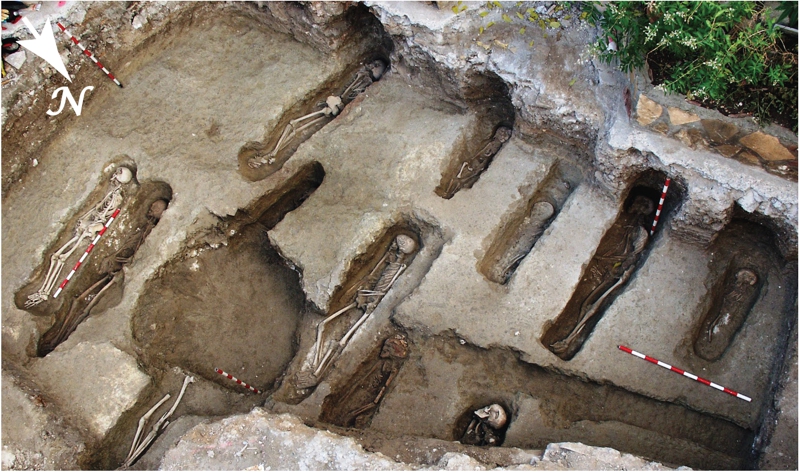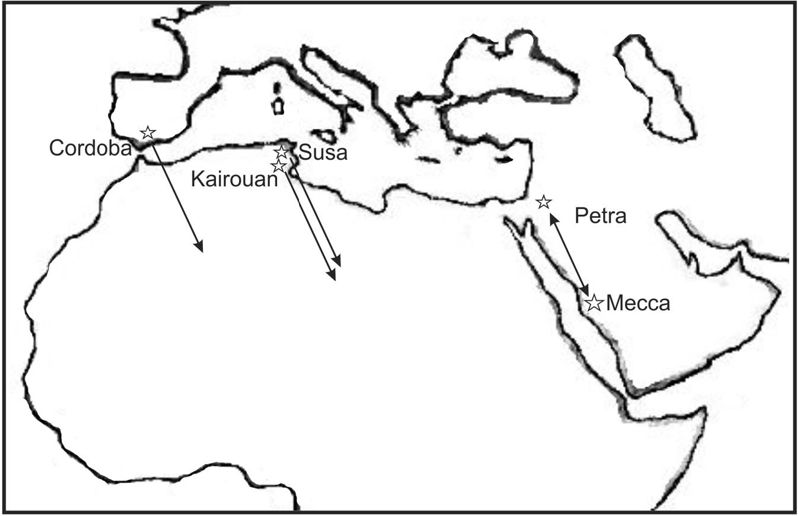
|
|
|
|
|
|
|
|
|
|
|
|
|
|
|
|

|
The Islamic necropolis discovered in Tauste (Zaragoza, Spain) is the only evidence that a large Muslim community lived in the area between the 8th and 10th centuries. Muslims invaded most of the Iberian Peninsula in the Early Middle Ages (AD 711) and remained for the next seven centuries, until 1492 when the Christian Kingdoms totally reconquered the peninsula. The northern frontier of the country captured by the Muslims, known as al-Andalus, extended eastward on the southern slopes of the Cantabrian range from the present Galicia to Catalonia. Following the Muslim conquest, al-Andalus was at first (711–750) a province of the Umayyad Caliphate centered on Damascus. From 740 a series of civil wars between various Muslim groups resulted in the breakdown of the Arab empire and the Emirate of Cordova (c. 750–929) emerged. In 929 the emir of Cordova proclaimed himself Caliph and the period of the Caliphate of Cordova was established (929–1031). The Cordova Caliphate collapsed during a civil war and Al-Andalus broke up into a number of mostly independent states called taifa kingdoms. The independent taifas were too weakened to defend themselves against the Christian Kingdoms in the north and west, allowing the Reconquest. The Christian reconquest of Iberia ended with the final assault on the Emirate of Granada in 1492. From 711 to 1492, as political dominions changed, the boundaries between the Christian north and the Islamic south shifted constantly. The above photo shows the skeletons facing south east at approximately 150 degrees, similar to other Spanish and North African Qiblas that are parallel to a line drawn from Petra to Mecca.. |

|
|